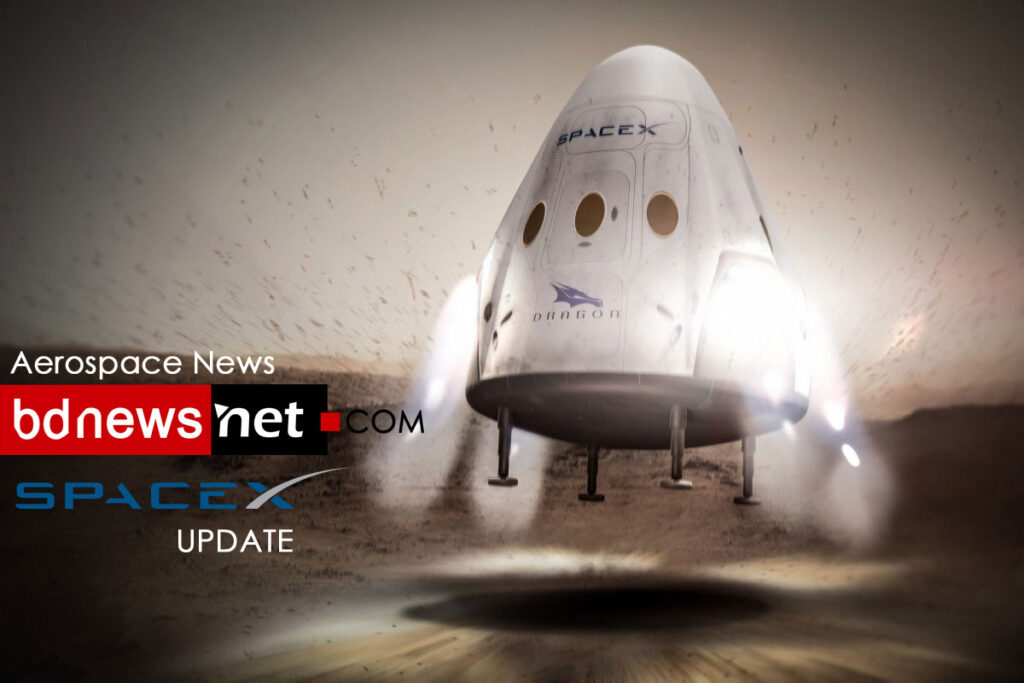[su_pullquote]”History suggests there will be some doomsday event, and I would hope you would agree that becoming a multi-planetary species would be the right way to go.” Elon Musk, SpaceX[/su_pullquote]
Today, SpaceX CEO Elon Musk unveiled the Mars vehicle — the spaceship his company plans to build to transport the first colonists to Mars. The spaceship is meant to launch from Earth on top of the booster and then travel the rest of the way on its own to the Red Planet.
Entrepreneur Elon Musk has outlined his vision for establishing a human colony on Mars for people that can afford a $200,000 ticket price.
Mr Musk, who founded private spaceflight company SpaceX, was speaking at theInternational Astronautical Congress (IAC) in Guadalajara, Mexico, on Tuesday.
His colonisation plan uses a fully reusable transportation system that would take 100 people and 80-days to get to Mars and eventually as little as 30-days.
This transportation system consists of a spaceship that is refuelled with methane and oxygen in Earth orbit and also on Mars after landing there.
Mr Musk explained that to achieve the $200,000 price, the entire transportation system has to be reusable.
He spoke of a colony of a million people to make it self-sustaining and that, with his plan, that could take 100 years.
The company’s interplanetary spaceship is informally know as the BFS, or “Big Fucking Spaceship.” Though not finalized, the first spaceship will probably be named “Heart of Gold,” a reference to the spacecraft in Douglas Adams’ Hitchhiker’s Guide to the Galaxy. It will have a diameter of 17 meters.
The plan is to send about 100 people per trip, though Musk wants to ultimately take 200 or more per flight to make the cost cheaper per person. The trip can take as little as 80 days or as many as 150 depending on the year. The hope is that the transport time will be only 30 days “in the more distant future.”
The rocket booster will have a diameter of 12 meters and the stack height will be 122 meters. The spaceship should hold a cargo of up to 450 tons depending on how many refills can be done with the tanker.
As rumored, the Mars vehicle will be reusable and the spaceship will refuel in orbit. This is key, according to Musk, because refueling in orbit makes the trip much cheaper and hence more doable. Similarly, it’s inefficient to bring propellant for the return trip. Ideally, a team would build a propellant plant on Mars and send the ships back that way. (This is supposedly possible given the natural resources on the Red Planet.)
At the weekend, Mr Musk announced that SpaceX had carried out its first test of the Raptor rocket engine that will power the spaceship and the booster that puts it into orbit.
A prototype booster fuel tank has been built and tested and Mr Musk showed a picture of the enormous tank with staff standing next to it.
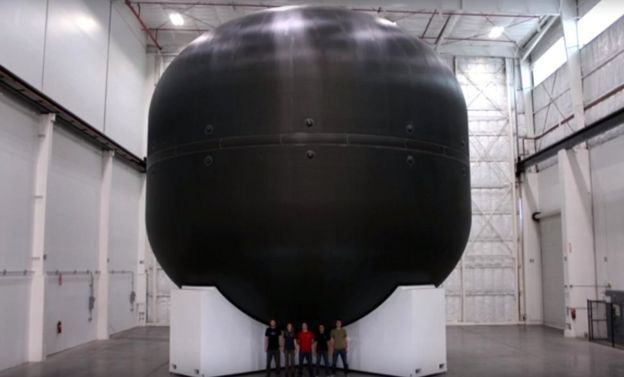 Image copyrightSPACEX
Image copyrightSPACEX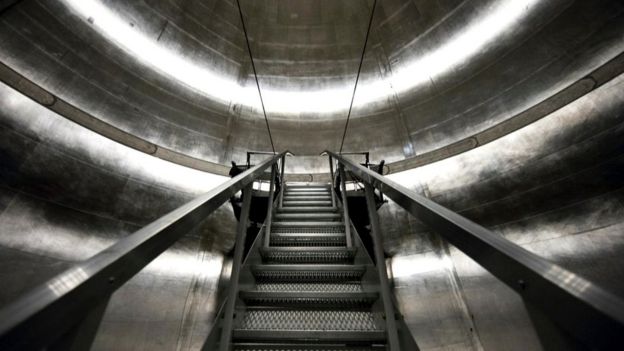 Image copyrightSPACEX
Image copyrightSPACEXThe combination of the booster and spaceship is called the Interplanetary Transportation System (ITS) and together they stand 122 metres tall, bigger than an Apollo-era Moon programme Saturn V rocket.
The booster will have 42 Raptor engines. Arranged in concentric circles, there will be an outer circle of 24 engines, an inner circle of 14 and in the centre seven Raptors.
Future versions of the ITS could be larger to accommodate bigger spaceships with up to 200 passengers.
The spaceship will have nine Raptor engines, carry 450 tonnes of people and cargo and have an open plan “occupant compartment” for colonists, according to Mr Musk.
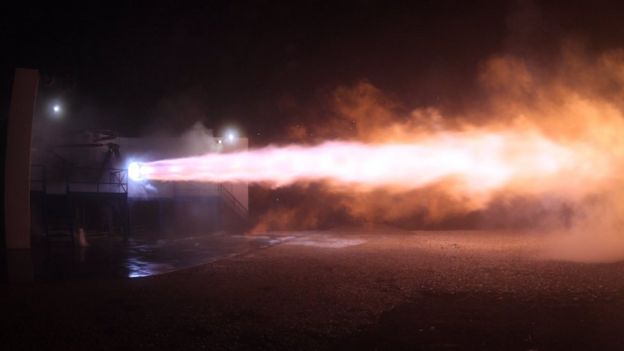 Image copyrightSPACEX
Image copyrightSPACEXHe envisages communal living during the eighty-day trip with movies and lectures and zero gravity games.
The ITS’ development will be funded by profit from SpaceX, Mr Musk’s own wealth. He sees the colonisation of Mars as a “huge public private partnership”, and said, “that is how the United States was established”.
Spaceships would be sent every two years when Mars is closest to Earth and the two worlds will be 57.6 million kilometres apart in 2018.
At their furthest, they can be 400 million kilometres apart and in the past they have only been as close as 100 million kilometres.
Once it reaches Mars, the spaceship is shaped so that it will naturally be decelerated as it passes through the atmosphere. Its engines will then fire to slow it down to land vertically on legs, like SpaceX’s Falcon 9 rocket does today.
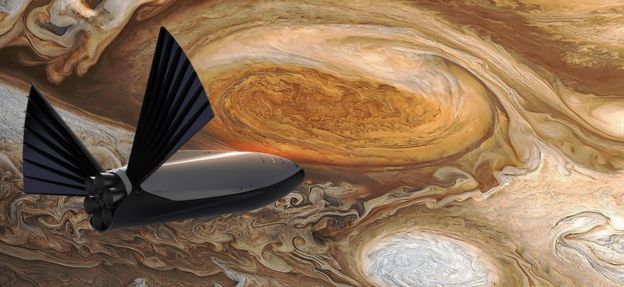 Image copyrightSPACEX
Image copyrightSPACEXMr Musk outlined a future where 1,000 spaceships could be in orbit. “The Mars colonial fleet would depart en masse.” He expected a spaceship to last 12-15 flights.
In 2012, he told FORBES, “[su_quote]This is not the path to go to maximize riches. It’s a terrible risk-adjusted return. But it’s gotta happen. I think that for me and a lot of people, America is a nation of explorers. I’d like to see that we’re expanding the frontier and moving things forward. Space is the final frontier and we have to make progress.[/su_quote]
Read a Interesting blog post by John Hawthorne :

